“To send light into the darkness of human beings~
such is the duty of the artist.” Schumann
The therapeutic health benefit gift that origami can bring to people who are mentally ill is something that Rosemary Browne has seen firsthand.
Rosemary is a passionate origami teacher who has been helping people overcome their mental challenges by teaching them the art of paper folding. Since 2008 she has been sharing origami with patients on the psychiatric unit at the Kootenay Boundary Regional Hospital in Trail, Canada.
She has kindly agreed to answer some questions on how the practice of origami helps psychiatric patients.
• Please share with us some of your experience teaching origami to the patients on the psychiatric unit.
It has been a wonderful journey for me to be able to share the magic of the art form of origami with literally thousands of people.
I am as passionate now -if not more so, as I was eight years ago when I first approached Tamara Hamilton, Activity Coordinator of the Daly Pavillion, with my idea of bringing origami into the hospital.
Together we have watched as the paradoxical ability that origami has to distract and focus simultaneously has relieved patients from their emotional pain.
Tamara had never folded before she met me and I feel honored to have worked with her. She has an incredibly quick mind, pick up new folds and bases easily, while at the same time scanning the table to see who is in need of help.
Tamara’s compassion for those who suffer with mental illness combined with her love for the origami art form has contributed tremendously to this program’s great success.
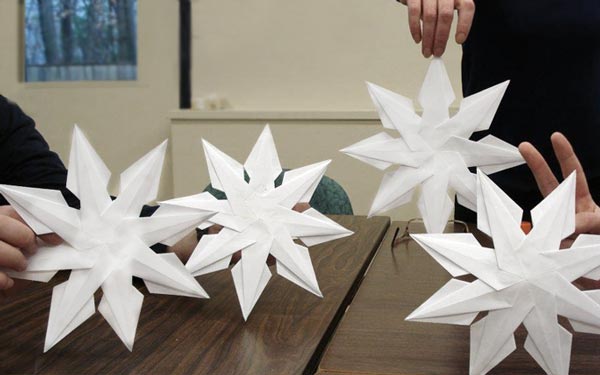
• What beneficial effect has origami brought to the patients you’ve taught?
Origami works the left and right hemispheres of the brain intensely.
Origami is, in my opinion, mental as well as spiritual nutrition. There are times I can visibly see the effects of the sedative medication as well as the stimulation to the brain as a result of folding.
Origami usually wins the battle because of the act of being mindful – the moment-to-moment awareness overrides the medication and brings clarity to the mind. I greatly admire the patients’ courage for engaging in the folding experience.
I have often said that once we are in the group room and begin to fold you would be hard-pressed to know you were in a hospital let alone on a psychiatric ward. We are quite simply people folding to our hearts’ content.
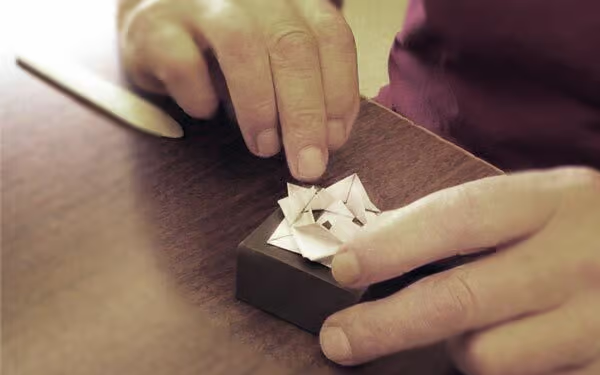
• What have you found to be the hardest part of teaching origami to psychiatric patients?
Tamara and I know that the hardest part of our work is getting patients to join the group as they are often in a state of mind where initiative and decision-making are paralyzed.
However, once they’ve arrived, are seated, and the sheet of paper is in front of them, the magic begins.
• What type of origami models do you teach your patients?
Prior to a class it is not unusual for me to spend hours searching for and practicing with different models. That said, there are occasions when the patients’ ability levels will be so diverse that I will have to pull something out of my hat to accommodate these varied capabilities.
For the most part though, I would say that all the models I choose are at a low intermediate level. I do believe in the “challenge” of a more difficult model though as I know the pride the patients feel upon completion and that such a model will be a “keeper.”
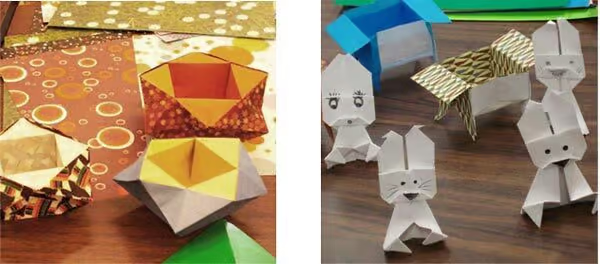
• Please share with us some recommendations for people who would like to teach origami to psychiatric patients.
- To approach this special population with “understanding” is the key for success. Patients are very often stigmatized by their stay on a psychiatric ward, as well as being sick, and the freedom to come and go has been removed; as they are in a locked facility. To validate their feelings of apprehension and frustration creates an instant bond.
- I am also very candid about my “humanness” which may and has included over the years making mistakes and at times of personal stress going completely blank during the teaching of a model. As I have told many students we are only human after all.
- When teaching never assume anything. A patient might not know what folding in half means, or what a diagonal is.
- Disregard whatever disability it is that brings the patient to your class. Your job is to make them feel better.
Related Posts:
- How a Paper Heart can Help You Stay Healthy
- Origami Art Therapy for Mental Health
- Recovering Health Through Origami
- The Smile of Mona Lisa
- Dr. Lizzie Burns Uses Origami in her Anti-Boredom Campaign
- Origami – A Help to Alzheimer’s Patients
- Stay Calm and Make an Origami Ladybug
- All That’s Worth Cherishing Begins in the Heart




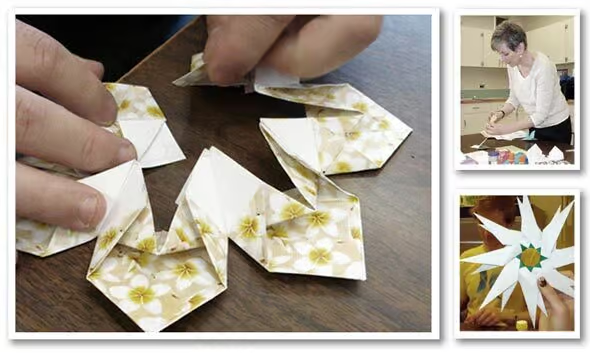
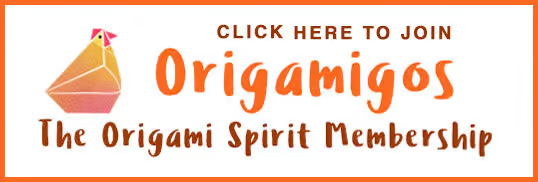
Thank you for all you do!! I love using origami in the school setting as a counselor. Students love doing origami and it does help them self-regulate. I am glad it also helps in a psychiatric setting. I believe in the benefits of origami so much I was able to write a book for school counselors. Thank you spreading the benefits and love of origami!
Hi Daniel,
I am happy to hear about your experiences in using origami to help your students. Can you share with us the name of the book you wrote?
Thank you!
Thank you for your kind words.. the name of my book is Using The Art of Origami in School Counseling through MarcoProducts.. thank you for the interest.. again I appreciate all the great work you are doing with origami!
Thank you for sharing the name of the book, Daniel. I’d love to check it out.
I teach an origami class to the Women 2 Women cancer survivors group at our local hospital a couple times througout the year. Before the class, I teach two members of the group how to fold the model, so they can be assistants. It is always a refreshing and rewarding experience. The particpants, love the final projects and always ask for more, or suggest another model. During folding time, the focus is on learning and folding, understanding the different folds, working out a more challengeing fold. My next class is coming in September, and we will be folding the chain of hearts found on Leyla’s website, Origami Spirit.
One of my best experiences with origami was teaching kids with autism. Their amazement when they managed to finish a model was more than rewarding, it was satisfaction for my soul. Lately I am teaching origami to students who will become future elementary school teachers. When they ask me who benefits more from origami I always answer children on the spectrum, children diagnosed with ADHD and children with special needs in general. Origami makes kids with learning dissabilites feel accepted and capable. I love the light in their eyes everytime they make a model.
Anastasia,
What great experiences you share with us about your using origami with children. Thank you!!
Querida Leyla, gracias por este articulo, me gustaria contactarme con Rosmary para ver como enfoca ella la enseñanza. Donde yo vivo hay muchos adultos mayores y yo misma empece con el bello origami para mantener mi memoria activa. Nuevamente gracias, siempre estas atenta a todo este hermoso mundo y sos muy generosa.
Un abrazo luminoso y lleno de amor para vos
Hola Cris,
Me alegra que te haya gustado el artículo. Te puedes contactar con Rosemary a través de Facebook!
I am happy to read an article like this- While teaching art classes I saw how students benefited from making dimensional projects that required their total concentration.
Also, I find the top left origami model an interesting one to use. Is there a tutorial for it?
Students love origami and the success that comes with folding a figure! At the moment there is no tutorial for the model you like here, but please take a look to the page where we list tutorials for similar modular and geometric origami models: https://www.origamispirit.com/videos/modular-and-geometric-origami/
This ring/star in particular is quite simple to make and it is also a great toy: https://www.origamispirit.com/2013/09/how-to-make-a-modular-origami-magic-star/
Leyla, it is so graceful for Rosemary and Tamara to offer her talent, skill and passion to people who were left behind in the hospital wards. I can imagine the art of origami can bring a rich phase to these people and even there are a lot of people whose situation are somewhat the same, help them to put pain and sadness aside to have fun and relax with a piece of paper. I believe we can use our talent to enrich others’ lives and bring smiles and joy.
All of us can contribute our grain of sand for the well being of our communities. Rosemary and Tamara show us one way to do it! Thank you for writing Edna.
Hi Leyla,
I am elated to see this article! I worked with children with learning disablities, both emotional and educational. Art is a vehicle to well being. Origami keeps the hands busy and the mind relaxed. I do believe most people who have a mental challenge have a very diverse and creative mind.
Rosemary is a blessing. We need more people like her to understand that mental illness is as painful as a physical one.
Thank you Leyla!
Yes, Pat, we are grateful for Rosemary, her work and her kind willingness to describe her experiences in this article. Not only does she teach and share with people having mental challenges, but she shows the rest of us a way to use origami in a very meaningful way. Congratulations for your work with children too!